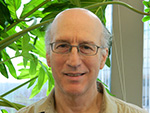
Research Topics
Dr. Goldman identifies genes that influence vulnerability to alcoholism, other addictions and other psychiatric diseases. His laboratory uses a combination of genomic, intermediate phenotype and functional genetic methods to identify functional variants that ultimately influence vulnerability to causally complex psychiatric diagnoses via their effects on molecules and neural functions that mediate these behaviors.
Throughout his career, Dr. Goldman has focused on the identification of genetic factors responsible for inherited differences in behavior, and he has authored over 300 papers. These including several of the first “imaging genetics” studies. He and his group are increasing reliant on genomic methods, including sequencing, genome wide association and epigenetic studies, for identifying genes that influence behavior. At several of these genes they have discovered loci altering molecular function and traced the effects of alleles through to complex behavior. Several, for example variants at the serotonin transporter, catechol-O-methyltransferase and neuropeptide Y, alter stress response and emotion, the gene effects being context-dependent. An HTR2B “to be or not to be” stop codon found in Finns, but not in individuals of other ancestries, can lead to impulsivity. Several of Dr. Goldman’s studies involve the use of well-defined founder populations, including Finland and Native American Indian communities, and his studies have also taken advantage of the ability to control genetic and environmental factors in animal models, both for locus discovery and for validation of gene effects.
Biography
Dr. David Goldman has been Chief of the Laboratory of Neurogenetics since 1991. Dr. Goldman graduated cum laude from Yale University (B.S., 1978) and graduated magna cum laude from the University of Texas Medical Branch, Galveston (M.D., 1978) and was a Resident in Psychiatry in 1979. He joined the NIAAA in 1979 and was an NIMH Clinical Associate 1980-1984, working in Giulio Cantoni's and Irv Kopin's labs. He rejoined NIAAA in 1985.
Dr. Goldman is a Fellow of the American College of Neuropsychopharmacology. His awards include the NIH Director’s Award (twice), and the James Isaacson Research Award of the International Society for Biological Research on Alcoholism.
Selected Publications
- Kwako LE, Schwandt ML, Ramchandani VA, Diazgranados N, Koob GF, Volkow ND, Blanco C, Goldman D. Neurofunctional Domains Derived From Deep Behavioral Phenotyping in Alcohol Use Disorder. Am J Psychiatry. 2019;176(9):744-753.
- Jung J, McCartney DL, Wagner J, Yoo J, Bell AS, Mavromatis LA, Rosoff DB, Hodgkinson CA, Sun H, Schwandt M, Diazgranados N, Smith AK, Michopoulos V, Powers A, Stevens J, Bradley B, Fani N, Walker RM, Campbell A, Porteous DJ, McIntosh AM, Horvath S, Marioni RE, Evans KL, Goldman D, Lohoff FW. Additive Effects of Stress and Alcohol Exposure on Accelerated Epigenetic Aging in Alcohol Use Disorder. Biol Psychiatry. 2023;93(4):331-341.
- Zhou Z, Karlsson C, Liang T, Xiong W, Kimura M, Tapocik JD, Yuan Q, Barbier E, Feng A, Flanigan M, Augier E, Enoch MA, Hodgkinson CA, Shen PH, Lovinger DM, Edenberg HJ, Heilig M, Goldman D. Loss of metabotropic glutamate receptor 2 escalates alcohol consumption. Proc Natl Acad Sci U S A. 2013;110(42):16963-8.
- Bevilacqua L, Doly S, Kaprio J, Yuan Q, Tikkanen R, Paunio T, Zhou Z, Wedenoja J, Maroteaux L, Diaz S, Belmer A, Hodgkinson CA, Dell'osso L, Suvisaari J, Coccaro E, Rose RJ, Peltonen L, Virkkunen M, Goldman D. A population-specific HTR2B stop codon predisposes to severe impulsivity. Nature. 2010;468(7327):1061-6.
- Zhou Z, Blandino P, Yuan Q, Shen PH, Hodgkinson CA, Virkkunen M, Watson SJ, Akil H, Goldman D. Exploratory locomotion, a predictor of addiction vulnerability, is oligogenic in rats selected for this phenotype. Proc Natl Acad Sci U S A. 2019;116(26):13107-13115.
Related Scientific Focus Areas





Molecular Biology and Biochemistry
View additional Principal Investigators in Molecular Biology and Biochemistry
This page was last updated on Saturday, September 2, 2023